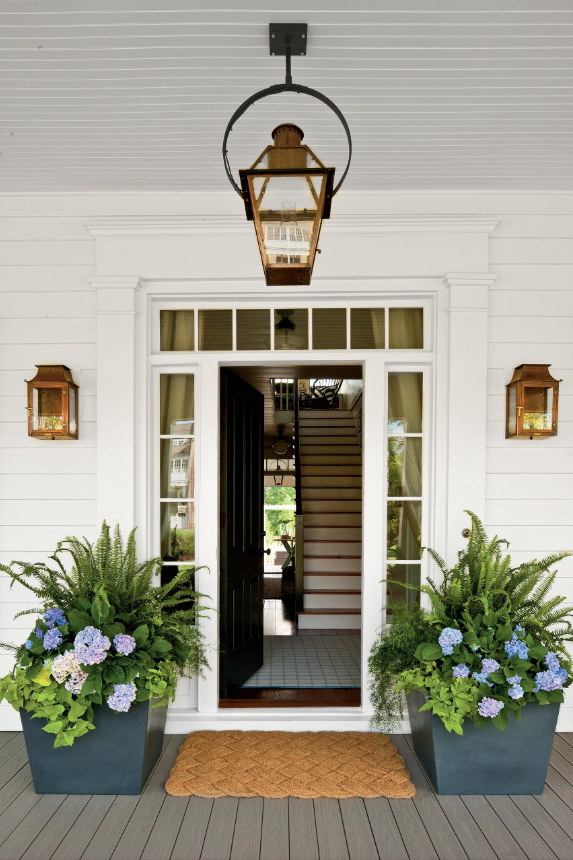Top 12 Tips for Proper Siding Maintenance


Maintaining the siding of your home is a critical aspect of homeownership, especially in Northern Illinois, where the seasons bring their own set of challenges. From the sweltering heat of summer to the icy grip of winter, the external cladding of your home needs to withstand a wide range of weather conditions. Effective siding maintenance not only preserves the aesthetic appeal of your home but also its structural integrity, safeguarding against potential damage caused by the elements. Given the unique climate of Northern Illinois, certain maintenance practices are particularly beneficial in extending the lifespan of your siding and ensuring your home remains a comfortable haven year-round. In this blog post, we’ll take a look at tips for maintaining your siding to ensure your home maintains its visual appeal and is ready to withstand external pressures.
Regular Inspections
The first line of defense in siding maintenance is conducting regular inspections. At least twice a year, closely examine your siding for any signs of damage, such as cracks, warping, or discoloration. Early detection of these issues can prevent them from escalating into more significant problems that are costlier to repair.
Immediate Repairs
If inspections reveal any damage, it’s extremely important to address these issues immediately. Small repairs can quickly become big problems if left unattended. Whether it’s replacing a warped board or sealing a crack, prompt action can save you time and money in the long run.
Partner with Professionals
For more substantial repairs or when in doubt about the extent of damage, it’s wise to consult with professionals. Partnering with a reputable service like XL Contracting ensures that your siding is evaluated and repaired by experts familiar with the challenges posed by Northern Illinois’s weather. This not only guarantees quality workmanship but also peace of mind.
Clean Siding Annually
Dirt, debris, and algae can accumulate on your siding over time, potentially causing damage or detracting from your home’s appearance. An annual cleaning, using a soft brush and a mild detergent solution, can keep your siding looking new and prevent the build-up of harmful substances. To ensure thorough cleaning, pay special attention to crevices and corners where grime may accumulate unnoticed. Regular maintenance not only preserves the aesthetic appeal of your home but also enhances its durability against environmental elements. If your struggling to do this on your own, then consider hiring a professional. They can help to make your siding look like new again, ensuring the job is done efficiently and with a high-quality finish.

Trim Overhanging Branches
Vegetation growing close to your home can pose a risk to your siding. Overhanging branches can scrape against siding during windy conditions, causing physical damage. Keeping trees and shrubbery well-trimmed not only protects your siding but also reduces the risk of pests. Additionally, pruning overhanging branches can improve sunlight exposure and airflow around your home, promoting a healthier environment for both your siding and landscape.
Check for Water Damage
Water is one of the biggest threats to your siding, particularly after Northern Illinois’s snow melts or heavy rainfalls. Regularly check your siding for signs of water damage, such as soft spots, swelling, or mold. Ensuring proper drainage away from your home’s foundation can also help mitigate this risk. In addition to visual inspections, consider conducting water tests to identify any hidden leaks or infiltration points along your siding’s surface.
Prevent Mold and Mildew
Moisture can lead to the growth of mold and mildew, which not only damages siding but can also pose health risks. Regularly inspecting your siding for early signs of these issues and addressing them promptly with appropriate cleaning solutions can keep your siding in pristine condition. Additionally, ensuring that your home has proper ventilation can help reduce moisture buildup. Installing vents or fans in moisture-prone areas like bathrooms and kitchens can aid in maintaining optimal humidity levels and preventing mold growth.
Seal Any Cracks
Even small cracks in your siding can become gateways for water and pests, leading to further damage. Using the right caulking material to seal these cracks can extend the life of your siding. It’s important to choose a sealant that is compatible with your siding material and to apply it under the right weather conditions for the best adherence and protection. Periodically inspect the caulking for signs of wear or deterioration and reapply as necessary to maintain a watertight seal and preserve the integrity of your siding.
Paint and Stain Regularly
For wood siding, protection from the elements is key to preventing rot and decay. Regularly applying a fresh coat of paint or stain can seal the wood against moisture and sun damage. This not only keeps your siding looking fresh but also acts as a barrier against weathering and aging, extending the overall lifespan of your siding. Before applying paint or stain, ensure that the surface is clean and dry, and consider applying a primer to enhance adhesion and durability. Additionally, choose high-quality paint or stain products formulated specifically for exterior use to achieve optimal results and long-lasting protection.
Avoid Direct Spraying from Power Washers
While cleaning your siding, it’s essential to avoid direct spraying with high-pressure power washers, which can damage some types of siding or force water behind panels, leading to mold or structural issues. Opting for a gentler cleaning method can effectively remove dirt and debris without risking damage to your siding.

Monitor Pest Activity
Pests such as termites and carpenter ants can cause significant damage to siding, especially wood types. Regularly inspecting your siding for signs of pest activity and taking prompt action to address infestations can protect your siding from unnecessary harm. Sometimes, professional pest control services offered by a company like Reliant Pest Management may be needed to fully eradicate the problem and prevent future occurrences.
Insulate Properly
Proper insulation not only improves your home’s energy efficiency but also prevents problems like ice dams that can damage your siding in the colder months. Ensuring that your attic is well-insulated and that your home has adequate ventilation can help maintain an even temperature on your siding, reducing the risk of ice-related damage.
Conclusion
Maintaining your home’s siding with diligence and care is an investment in your property’s value, appearance, and longevity. By following these twelve comprehensive tips, homeowners can effectively protect their siding against common issues, from weather damage to pest infestations. Regular maintenance, combined with timely repairs and preventive measures, ensures that your home remains a beautiful, safe, and comfortable space for years to come. While some tasks can be DIY, don’t hesitate to call in professionals for complex repairs or maintenance. With a commitment to regular siding upkeep, your home will continue to stand strong and look its best, regardless of the challenges posed by the external environment.








